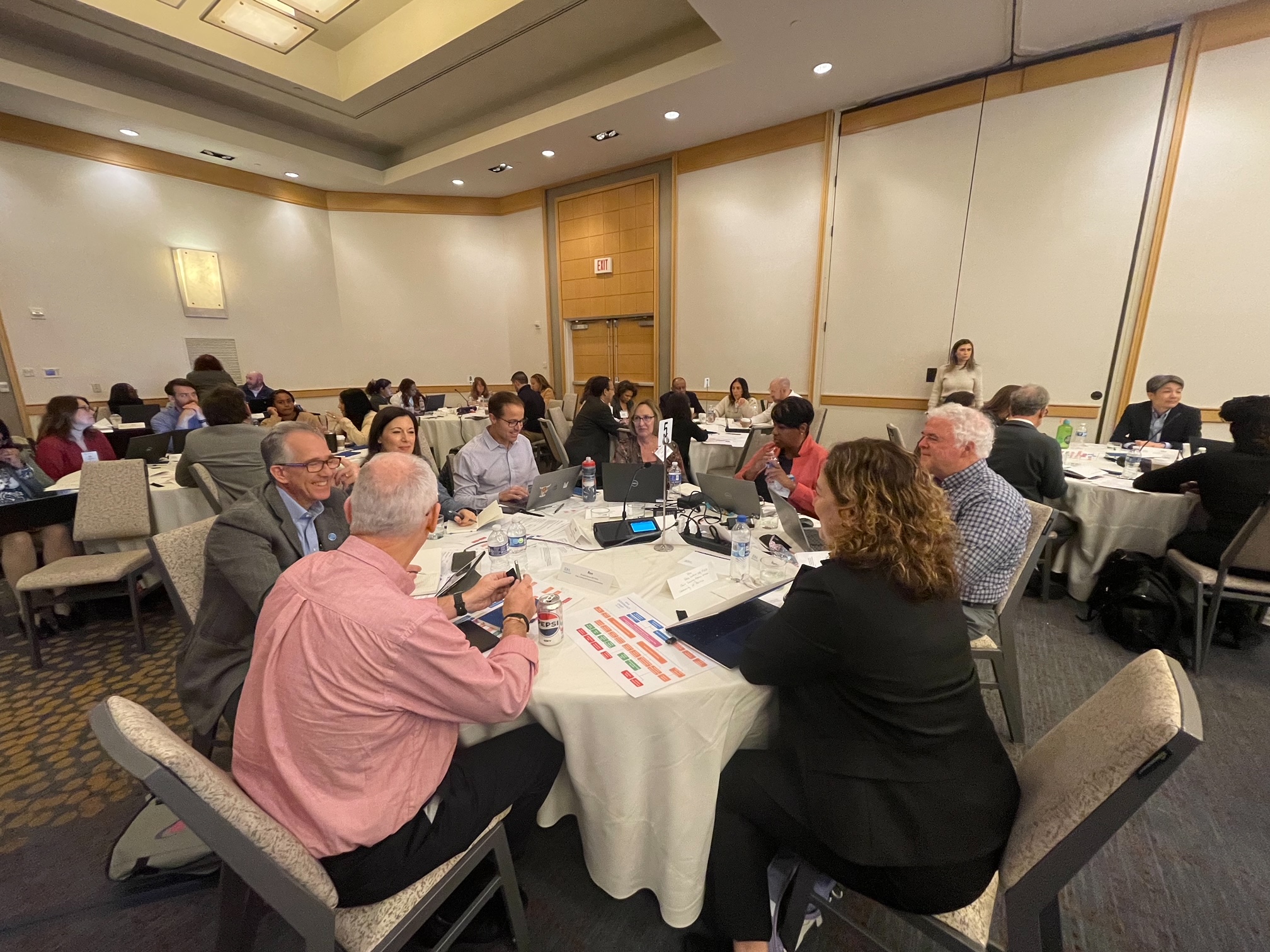 Inspired. Motivated. Empowered.
Inspired. Motivated. Empowered.
Those were just a few of the words our volunteer leaders used to describe their feelings after attending IDSA’s inaugural Leadership Summit earlier this month in Arlington, Va. Close to 50 chairs and vice chairs of committees and other volunteer groups within IDSA’s new governance structure met, along with the Board of Directors and staff, for a day and a half of insightful discussions that will shape the future of our Society and the ID field.
Following a meeting of IDSA’s Board of Directors on Nov. 6, the Leadership Summit kicked off on Nov. 7 with the primary goal of creating a unified understanding and appreciation of how every volunteer in our new governance structure can work together to achieve IDSA’s bold new workforce vision and other strategic priorities of the Society.
A collective commitment
The decision to restructure our volunteer groups was fueled by a commitment to align volunteer and staff resources with our strategic priorities, eliminate duplication of efforts, provide more meaningful volunteer opportunities for members and engage a new generation of ID leaders who represent the diversity of the field. One very exciting aspect of our new structure is the creation of more communities of practice and interest groups to enhance connections among members with specific interests and professional roles.
Prioritizing our strategies to achieve our goals
Having all of these brilliant minds in one room was energizing, and it was extremely satisfying to see our new structure in action as we worked during breakout groups to prioritize initiatives that will drive us toward our workforce development vision. As we work toward our overarching goals — with health equity and inclusion, diversity, access and equity as key tenets binding all of our efforts — a few specific strategies rose to the top of the priority list.
- Increasing recognition of ID as an indispensable resource to health care systems, policymakers and payers for optimizing infectious diseases prevention, care and services.
- Increasing awareness and excitement about ID across all learners, with a focus on medical students and residents.
- Developing and optimizing innovative and effective educational strategies for medical students and residents.
The next step for our volunteer leaders will be to take these workforce priorities and other strategic initiatives back to their full groups to develop supporting work plans that will be approved by our new Coordinating Council and executed in 2024.
Changing the narrative
To support these strategies and attract medical students and residents into the field, we will also need to change the “sky is falling” narrative around recent ID Match results, as well as the results expected later this month. Wendy Armstrong, MD, FIDSA, a foremost expert in this area, joined us at the Summit to provide context to the recent slight downturns we’ve seen. In reality, we are opening more fellowship programs and offering more fellowship positions than ever before. Our long-term trajectory is good, and the ID field remains a vibrant and exciting specialty. I encourage you to listen to my latest President’s Podcast where Dr. Armstrong and fellow IDSA Board member Erin Bonura, MD, FIDSA, delve a bit deeper into this topic. We are realistic that more ID specialists are needed to meet the world's health care challenges, but confident that we will continue meet the moment as we have with COVID-19 and mpox.
Communicating our value
Another exciting initiative that will help support our new workforce vision is a refresh of IDSA’s brand identity to better communicate the value of ID and our Society to members, prospective members and the public. During our Board meeting preceding the Leadership Summit, we heard from representatives of our branding agency about the input we received during an exhibition at IDWeek. Hundreds of members reviewed and provided feedback on potential approaches to more effectively tell our story. We will be reaching out to additional groups of members over the next few months to ensure we are capturing your diverse perspectives with the goal of launching a new brand identity next year.
Opening lines of communication on a top priority: Pandemic preparedness
We also had the opportunity to hear from representatives of the new White House Office of Pandemic Preparedness and Response Policy, created this past July by the Biden Administration. Retired U.S. Air Force Major General Paul Friedrichs, MD, FACS, director, and Nikki Romanik, deputy director and chief of staff, joined the Leadership Summit to discuss how IDSA and the ID field can support this new office. OPPR is charged with leading, coordinating and implementing actions related to preparedness for, and response to, known and unknown biological threats or pathogens that could lead to a pandemic or to significant public health-related disruptions in the United States.
Next steps
As our inaugural Leadership Summit came to a close, I encouraged everyone in attendance to take the incredible energy in the room back home to their colleagues and patients. It will be up to all of us to change the narrative and send a positive message about our dynamic and rewarding field to the public.
I look forward to updating you as we build upon the work accomplished during this important meeting. Stay tuned to IDSA communications for updates as we move forward with these transformative initiatives.
